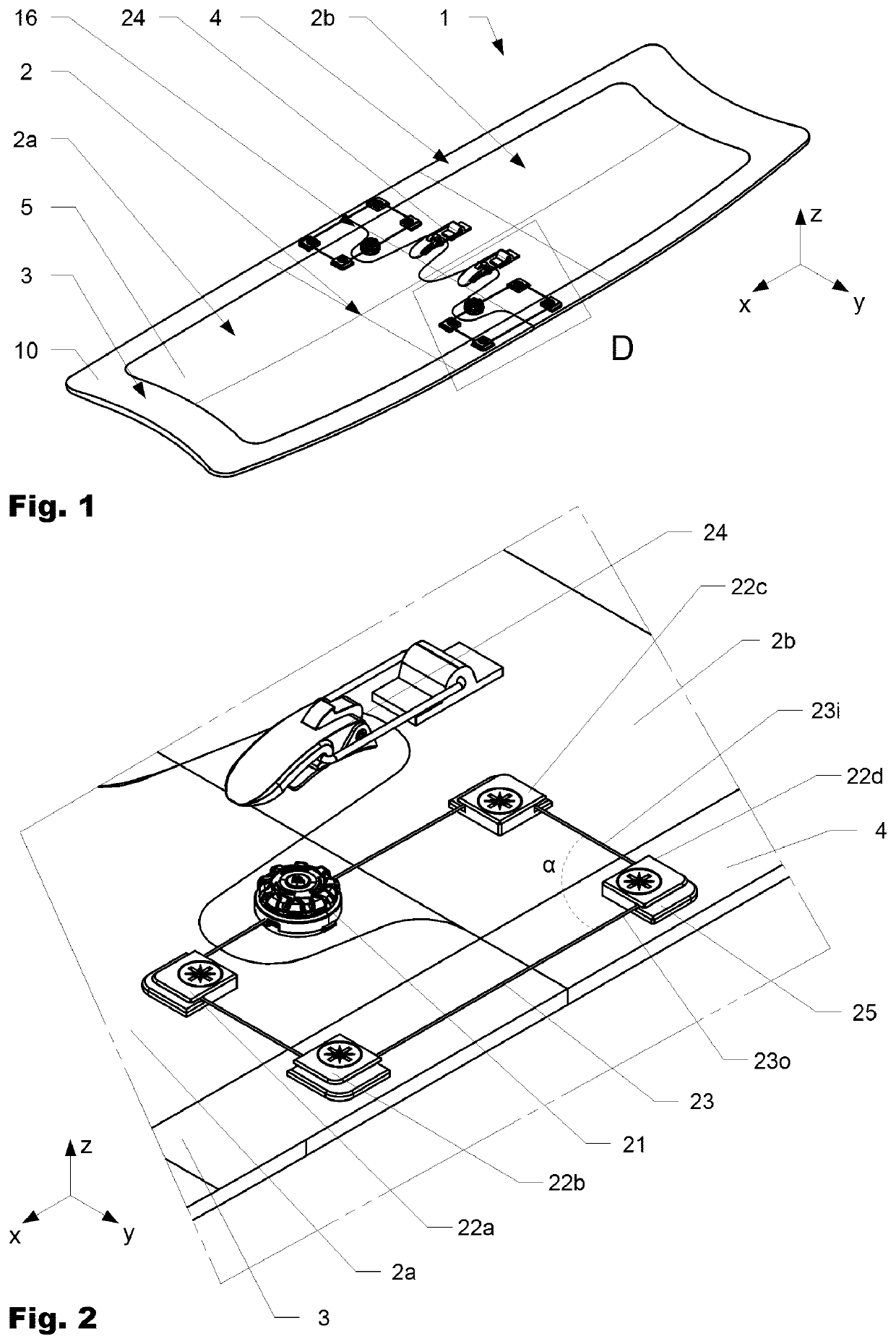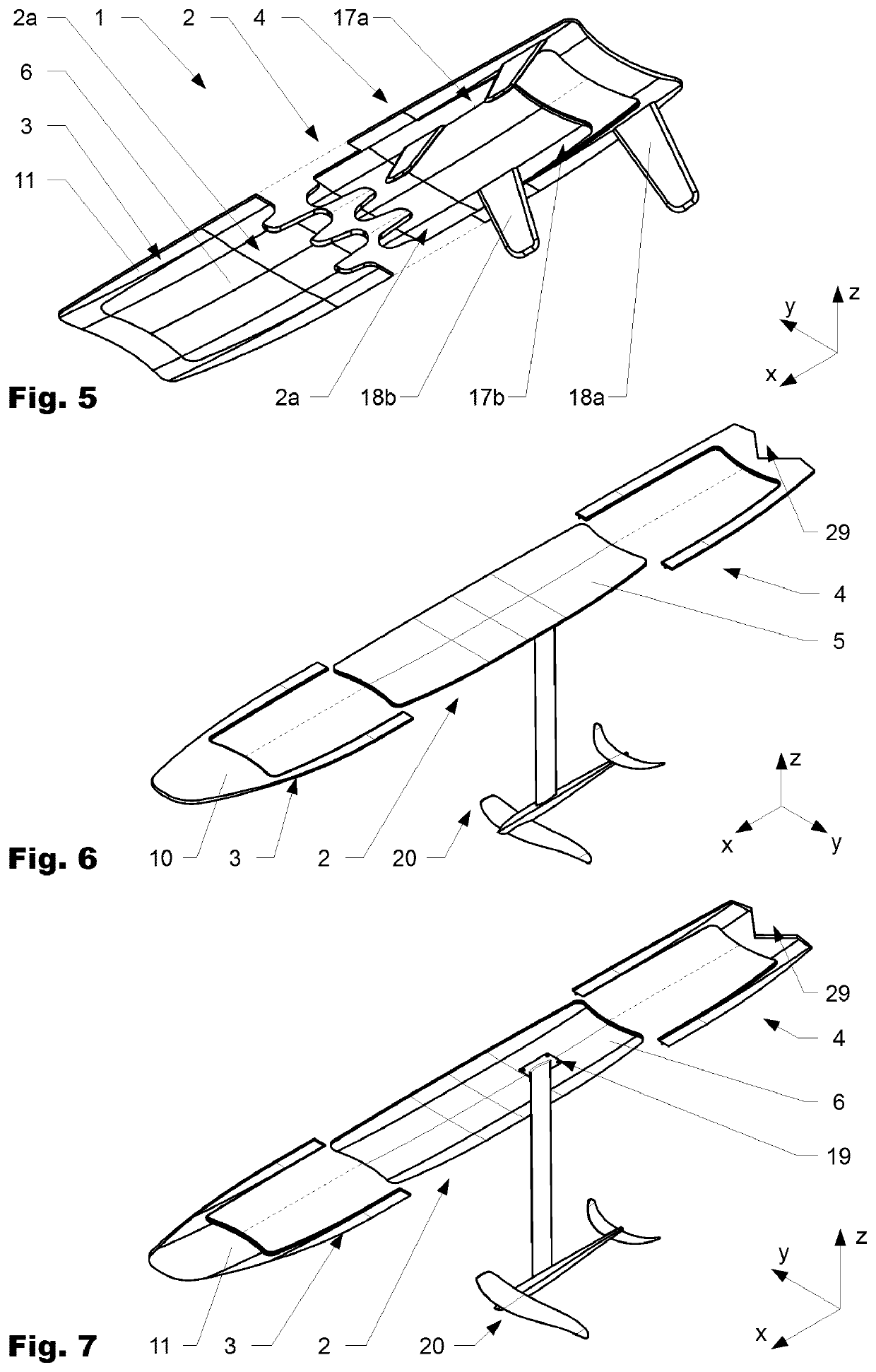Kiteboard
a technology of kiteboards and boards, applied in the field of kiteboards, can solve the problems of difficult assembly of boards known from the prior art, high demand for storage space and transportation space, and non-practical transportation, etc., and achieve the effect of convenient storage and transportation
- Summary
- Abstract
- Description
- Claims
- Application Information
AI Technical Summary
Benefits of technology
Problems solved by technology
Method used
Image
Examples
Embodiment Construction
[0031]Reference will now be made in detail to certain embodiments, examples of which are illustrated in the accompanying drawings, in which some, but not all features are shown. Indeed, embodiments disclosed herein may be embodied in many different forms and should not be understood as limited to the embodiments set forth herein; rather, these embodiments are provided so that this disclosure will satisfy applicable legal requirements. Whenever possible, like reference numbers will be used to refer to like components or parts.
[0032]FIG. 1 shows a first variation of the kiteboard 1 according to the invention in a perspective view and in the assembled position from above. The shown kiteboard 1 comprises a base 2, a front extension 3 and a back extension 4 such that the front extension 3 and the back extension extend around the base 2 and meet each other at a widest area (in the lateral direction y) of the base 2. It can further be seen that in the shown variation the base 2 may be divi...
PUM
 Login to View More
Login to View More Abstract
Description
Claims
Application Information
 Login to View More
Login to View More - R&D
- Intellectual Property
- Life Sciences
- Materials
- Tech Scout
- Unparalleled Data Quality
- Higher Quality Content
- 60% Fewer Hallucinations
Browse by: Latest US Patents, China's latest patents, Technical Efficacy Thesaurus, Application Domain, Technology Topic, Popular Technical Reports.
© 2025 PatSnap. All rights reserved.Legal|Privacy policy|Modern Slavery Act Transparency Statement|Sitemap|About US| Contact US: help@patsnap.com



